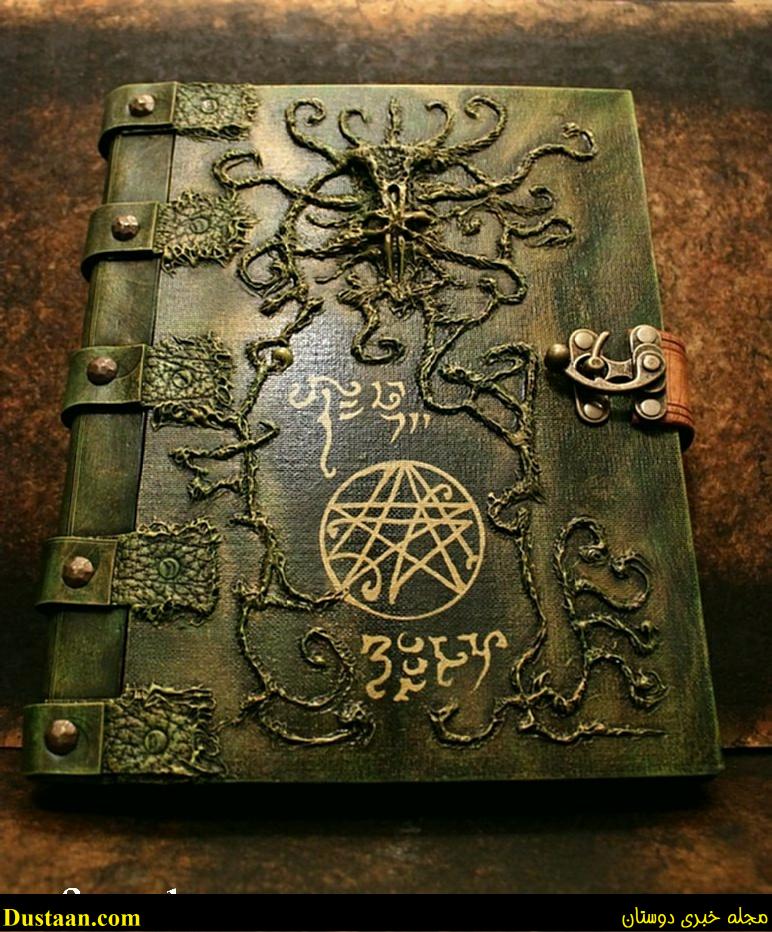دانلود رایگان نسخه اصلی کتاب رستاخیز مردگان

ترسناک ترین کتاب جهان است که حقایقی از جهان ماورا را برایمان یه تصویر میکشاند و ترسناک ترین صفحات ویکی پدیا را به خود اختصاص میدهد
با دانلود کتاب ترجمه نشده رستاخیز مردگان می توانید تمام مطالب آن را بدون جا افتادگی کوچک ترین مطلبی مطالعه کنید .
نسخه اصلی کتاب رستاخیز ( زبان اصلی )و بدون سانسور را از ما دریافت نمایید و از مطالعه این کتاب مرموز لذت ببرید .
کتاب نکرونومیکون رستاخیز مردگان و یا کتاب دیوانه کننده القابی است که روی این کتاب نهاده اند. نام دیگرش اما الضعیف است. نویسنده اصلی این کتاب فردی بدوی اهل شام به نام عبدل ال حضرت در سال ۶۹۹ نوشته شده است.
بعد از آنکه کتاب توسط ال حضرت به پایان رسید. بدن تکه تکه شده اش پیدا شد. دلیل و نحوه قتل نامعلوم بود. کتاب اصلی (نمونه دیگری از این کتاب توسط اچ پی لاو کرفت نوشته و در ژانر وحشت روانه بازار شد) شامل ۷ جلد است. و در ارتباط با آینده بشریت پیشگویی هایی در آن گنجانده شده است. بنا به ادعایی تعدادی از پیشگویی های نوستر آداموس برگرفته از این کتاب است.
Resurrection of the dead
The Blackman and woman of America is Spiritually dead to the knowledge of God, Self, and others. They must be resurrected from this condition with the Divine Knowledge of ALLAH.
Resurrection of the dead, or resurrection from the dead (Koine: ἀνάστασις [τῶν] νεκρῶν, anastasis [ton] nekron; literally: “standing up again of the dead”[1]) is used in the doctrine and theology of various religions to describe an event by which a person or people are resurrected (brought back to life). Various forms of this concept can be found in Christian, Islamic, Jewish and Zoroastrian eschatology. In the New Testament of the Christian Bible, the three common usages for this term pertain to (1) the resurrection of Jesus; (2) the rising from the dead of all men, at the end of this present age and (3) the resurrection of certain ones in history, who were restored to life.
Contents
1Rabbinic and Samaritan Judaism
2Christianity2.1Epistles
2.2Gospels and Acts
2.3Nicene Creed and early Christianity
2.4Modern Era
2.5Influence on secular law and custom
2.6Denominational views
3Islam
4Bahai Faith
5Zoroastrianism
6See also
7Footnotes
8References
9External links
Rabbinic and Samaritan Judaism[edit]
Main articles: Heaven in Judaism, Jewish eschatology, and Sheol
Resurrection of the Dead, fresco from the Dura-Europos synagogue
Ezekiel’s Vision of the Valley of Dry Bones, engraving by Gustave Doré (1866)
While there was no belief in personal afterlife with reward or punishment in Judaism before 200 BC,[4] in later Judaism and Samaritanism it is believed that the God of Israel will one day give teḥiyyat ha-metim (“life to the dead”) to the righteous during the Messianic Age, and they will live forever in the world to come (Olam Ha-Ba).[citation needed] Jews today base this belief on the Book of Isaiah (Yeshayahu), Book of Ezekiel (Yeḥez’qel), and Book of Daniel (Dani’el). Samaritans base it solely on a passage called the Haazinu in the Samaritan Pentateuch, since they accept only the Torah and reject the rest of the Hebrew Bible.
The resurrection of the dead is a core belief in the Mishnah which was assembled in the early centuries of the Christian era.[5] The belief in resurrection is expressed on all occasions in the Jewish liturgy; e.g., in the morning prayer Elohai Neshamah, in the Shemoneh ‘Esreh and in the funeral services.[6] Maimonides made it the last of his Thirteen Articles of Faith: “I firmly believe that there will take place a revival of the dead at a time which will please the Creator, blessed be His name.”[7]
There are three explicit examples in the Hebrew Bible of people being resurrected from the dead:
The prophet Elijah prays and God raises a young boy from death (1 Kings 17:17–24)
Elisha raises the son of the Shunammite woman (2 Kings 4:32–37); this was the very same child whose birth he previously foretold (2 Kings 4:8–16)
A dead man’s body that was thrown into the dead Elisha’s tomb is resurrected when the body touches Elisha’s bones (2 Kings 13:21)
During the Second Temple period, Judaism developed a diversity of beliefs concerning the resurrection. The concept of resurrection of the physical body is found in 2 Maccabees, according to which it will happen through recreation of the flesh.[8] Resurrection of the dead also appears in detail in the extra-canonical books of Enoch,[9] in Apocalypse of Baruch,[10] and 2 Esdras. According to the British scholar in ancient Judaism Philip R. Davies, there is “little or no clear reference … either to immortality or to resurrection from the dead” in the Dead Sea scrolls texts.[11] Both Josephus and the New Testament record that the Sadducees did not believe in an afterlife,[12] but the sources vary on the beliefs of the Pharisees. The New Testament claims that the Pharisees believed in the resurrection, but does not specify whether this included the flesh or not.[13] According to Josephus, who himself was a Pharisee, the Pharisees held that only the soul was immortal and the souls of good people will be reincarnated and “pass into other bodies,” while “the souls of the wicked will suffer eternal punishment.”[14] Paul the Apostle, who also was a Pharisee,[15] said that at the resurrection what is “sown as a natural body is raised a spiritual body.”[16] Jubilees refers only to the resurrection of the soul, or to a more general idea of an immortal soul.[17]







